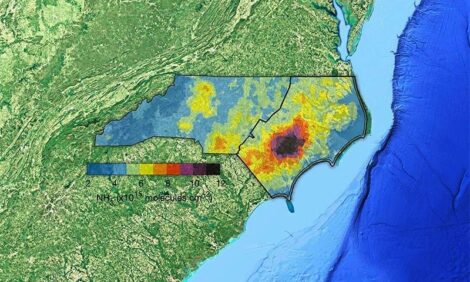



Points to Ponder When Raising Heavier Weight Pigs
Space allocation, size of feeder, manure pits and ventilation may need to be re-considered as pig market weights increase, says Doug Richards, Swine Grower-Finisher Specialist with the Ontario Ministry of Agriculture, Food and Rural Affairs in the latest 'Pork News & Views' newsletter from OMAFRA.As shown in the graph below, the hot carcass
weight (HCW) of market pigs in Ontario has
been increasing over time. Processors have
gone from wanting 77kg HCW in 1977 to
almost 100kg HCW today. With this increase
in weight, producers will need to change the
management in the grow–finish barns to
help optimise their returns for the larger pigs.
Producers may find that space allocation, size
of feeder, manure pits and ventilation may need
to be modified to handle the increase in the
pig's bodyweight and size.

Listed below are areas that should be looked at in the grow-finish barn.
Space allocation per animal
The larger animals
will require more space. The maximum
loading in the pen is the day before the first
sort. Keeping weights current by shipping at
the required weight may reduce the pen loading.
Research has shown that overcrowding of
pigs can result in a 10 per cent decline in growth rate.
Space allocation at the feeder
The
feeder partitions of 12 inches may not be
wide enough to accommodate the 14-inch
shoulder width of the larger animal. Recently, the author saw some heavy pigs (290 lbs plus) go on
to their knees in order to access the feeder.
A four-hole feeder may only accommodate
three large pigs at one time. If feeder access is
reduced it may result in reduced gain.
Manure pit capacity
Even though the number of pigs has not increased, the manure volume output from the larger animals may reduce the storage days of the pit.
Ventilation rates, summer and winter
Larger animals will need increased ventilation rates to maintain air temperature, quality and humidity levels. Recalculate the ventilation needs for the heaver pigs and adjust if necessary.
Sorting, handling and shipping
Larger animals
may not move, sort or load as easily. The
number of animals moved at one time should
be in the three to five range. Watch out for
heat stress when moving the larger animals.
They may need more time to recover from
the stress of sorting or moving.
By identifying the different areas that may need
management changes in the grow-finish barn
when raising heavier pigs, producers can make
the changes to help improve the bottom line.
October 2012







